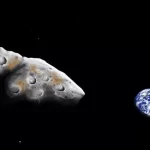Key Takeaways:
- NASA scientists discovered traces of molecular water on the sunlit side of the moon, defying previous beliefs.
- The finding opens possibilities for utilizing lunar water as a resource for future space exploration missions.
- The detection, made using NASA’s SOFIA airborne telescope, unveils water trapped in lunar soil in the Clavius crater.
- This breakthrough not only hints at potential resources for astronauts but also offers insights into lunar evolution.
- Ongoing and future missions, including NASA’s Artemis and the VIPER rover, aim to explore lunar water accessibility.
The recent announcement from NASA promising an exciting lunar discovery fueled speculations of extraterrestrial secrets, but the revelation is just as enthralling—scientists have detected traces of molecular water on the sunlit side of the moon, challenging our understanding of lunar dynamics and opening new possibilities for future exploration.
Contrary to previous assumptions, researchers have uncovered molecular water on the sunlit surface of the moon, defying expectations that such water would be lost to space due to the moon’s lack of atmosphere. The discovery introduces a paradigm shift, suggesting potential resources for future lunar exploration.
The presence of water on the sunlit moon raises prospects for resource extraction. Scientists believe that if a substantial water concentration is found, it could be extracted and utilized for exploration purposes, ranging from sustaining astronauts’ hydration needs to generating breathable oxygen or even serving as propellant for interplanetary travel.
To make this groundbreaking discovery, scientists employed NASA’s Stratospheric Observatory for Infrared Astronomy (SOFIA), a modified Boeing 747P equipped with a 9-foot reflecting telescope. By soaring to an altitude of 44,000 feet, SOFIA overcame atmospheric distortions, allowing for sharper observations of the moon’s surface.
The scientists focused their observations on Clavius crater, the second-largest visible crater on the moon’s near side. This high-latitude location was strategically chosen to investigate potential water deposits. Traces of water were found, equivalent to a 12-ounce glass of water per cubic meter of lunar regolith, trapped in small glass beads within the lunar soil.
Researchers propose that water molecules might have arrived on the moon by hitching rides on comets, becoming ensnared within glass beads upon impact. Another hypothesis involves the interaction of solar wind carrying hydrogen ions with oxygen atoms on the lunar surface. Understanding these processes contributes to unraveling the moon’s past and current dynamics.
The newfound water traces hold the potential to reveal insights into lunar processes. Investigating the water’s origin, movement, and storage on the lunar surface could enhance our comprehension of physical phenomena occurring on the moon, shedding light on its evolution and its role in the broader solar system.
Acknowledging that these findings represent merely a snapshot of the lunar water cycle, lead author Casey Honniball emphasizes the need for more extensive observations at different times of the lunar day. Further SOFIA flights are planned to study diverse lunar regions during various phases, indicating a continued quest for answers.
NASA’s upcoming Volatiles Investigating Polar Exploration Rover (VIPER) mission, is designed to explore shadowed regions at the moon’s south pole. While it won’t investigate sunlit areas, it reflects the ongoing commitment to unraveling lunar mysteries and preparing for future human exploration.
NASA’s Artemis mission, aiming to return humans to the lunar surface by 2024, and China’s ambitious plan to establish a permanent moon settlement by the 2030s highlight the global interest in lunar exploration. The newfound water reserves add an additional layer of complexity to these missions, prompting a reassessment of lunar resource accessibility.
While acknowledging the presence of water on the moon, uncertainties persist regarding its accessibility for future explorers. Jacob Bleacher from NASA emphasizes that understanding where water is located is just the initial step; more research is crucial to discern how it can be utilized effectively for scientific endeavors and exploration.


